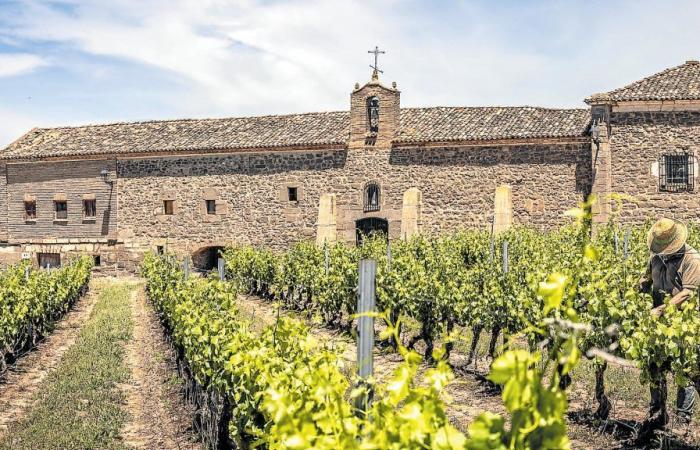Friday, June 14, 2024, 07:20
Comment
Copy link
WhatsApp
Facebook
x
LinkedIn
Telegram
After months of internal debate, the plenary session of the Regulatory Council will vote today on a proposal, which could have a sufficient majority and that would force the distillation of 4% of additional production that in principle would allow it to be used for table wine. According to sources consulted by Diario LA RIOJA, the Riojan cooperatives of Fecoar – which on several occasions have raised this issue as a red line – and the Navarrese cooperatives of UCAN have yet to confirm what their position would be, but a good part of the rest of the sector shares that That 4% should not be vinified, but rather must be sent to the burning (without any subsidy) if someone decides to put it in the winery. In case of not having the support, or at least with the abstention of the cooperatives, the key to the agreement to review the harvest regulations falls on the Alava organizations of ABRA (wineries) and UAGA (producers). The small Alava wineries do not want table wine, but their yield position is not the 90% that seems to have already been agreed, so their vote is unknown.
The campaign regulations were approved last year 2023 by the plenary session of the Regulatory Council, also valid for the current one, with a reduction in yield covered by 90% for red varieties and 69% in transformation, and leaving that margin in the field of 4% to be able to make common wine. The agreement also provided that the harvest regulations could be reviewed and this is what is wanted to be done in today’s vote at the request of agricultural organizations in particular, but this requires a majority of 75% of the table.
What is clear is that the covered yields will remain as they are, with 90% for red grapes and 100% for white grapes in the field – 69% and 70% in the winery respectively – and the key is whether the controversial wine of table disappears or continues to be tolerated. The agricultural organizations ARAG-Asaja, UAGR and UPA had an agreement in this regard and, although they even wanted to lower the maximum protected yield to 85%, at least they have achieved that Grupo Rioja, the dominant winery organization and without which no decision is possible does not oppose the elimination of common wine, although it is not willing to go below the 90% covered yield. Likewise, the cooperatives have stated that they would not lower the yield covered by said percentage either.
Controversial issue
The truth is that the admission of 4% additional grapes to make table wine – which ends up becoming the responsibility of Rioja itself – has been in the spotlight since the beginning of the year. First came the ‘yellow vests’, who, not without internal divisions either, agreed with the agrarian organizations on a document in which they requested the elimination of said surplus production.
Nor is it a matter to the taste of the regional administrations (La Rioja, the Basque Country and Navarra) that, although they do not have a vote at the Regulatory Council table, after committing tens of millions of public money to reduce surpluses (distillation) and destroy grapes through the green harvest do not understand that any surplus production is still tolerated.
For cooperatives it has until now, however, been a non-negotiable demand. In the event that there is no agreement at today’s meeting, the standards for 2024 would be those agreed upon in March of last year, that is: 90% and 69% in the field and processing of red grapes and 100% and 70% for grapes. and white wine, along with that additional 4% for table wine, with the only condition that the wineries that produce it must remove it from the facilities covered by Rioja before May 31, 2025.
The qualification of the harvest, another of the issues of the plenary session
Another item on the agenda of today’s plenary session of the Regulatory Council is the qualification of the 2023 harvest, which, on this occasion, has been delayed at least a month compared to previous occasions. The technical services will present to the organizations in the sector a report based on the analyzes carried out at the Evena (Navarra), Laguardia (Álava) and Haro (La Rioja) stations and on the tastings carried out by a group of more than 120 professionals, in which traditionally examine more than 5,000 samples. The previous harvest, 2022, was rated as ‘very good’, which is the qualification that Ribera del Duero has also recently given to its latest vintage, 2023. In the case of Rioja, we must go back to the 2018 vintage to find the qualification of ‘good’, and from there to 2013, while in the case of Ribera del Duero you have to go down to 2013 to find a qualification that is not ‘very good’ or ‘excellent’. The last Rioja vintage that obtained the highest rating was 2019, while in the Castilian-Leonese appellation, those of 2019, 2020 and 2021 have been officially excellent.






